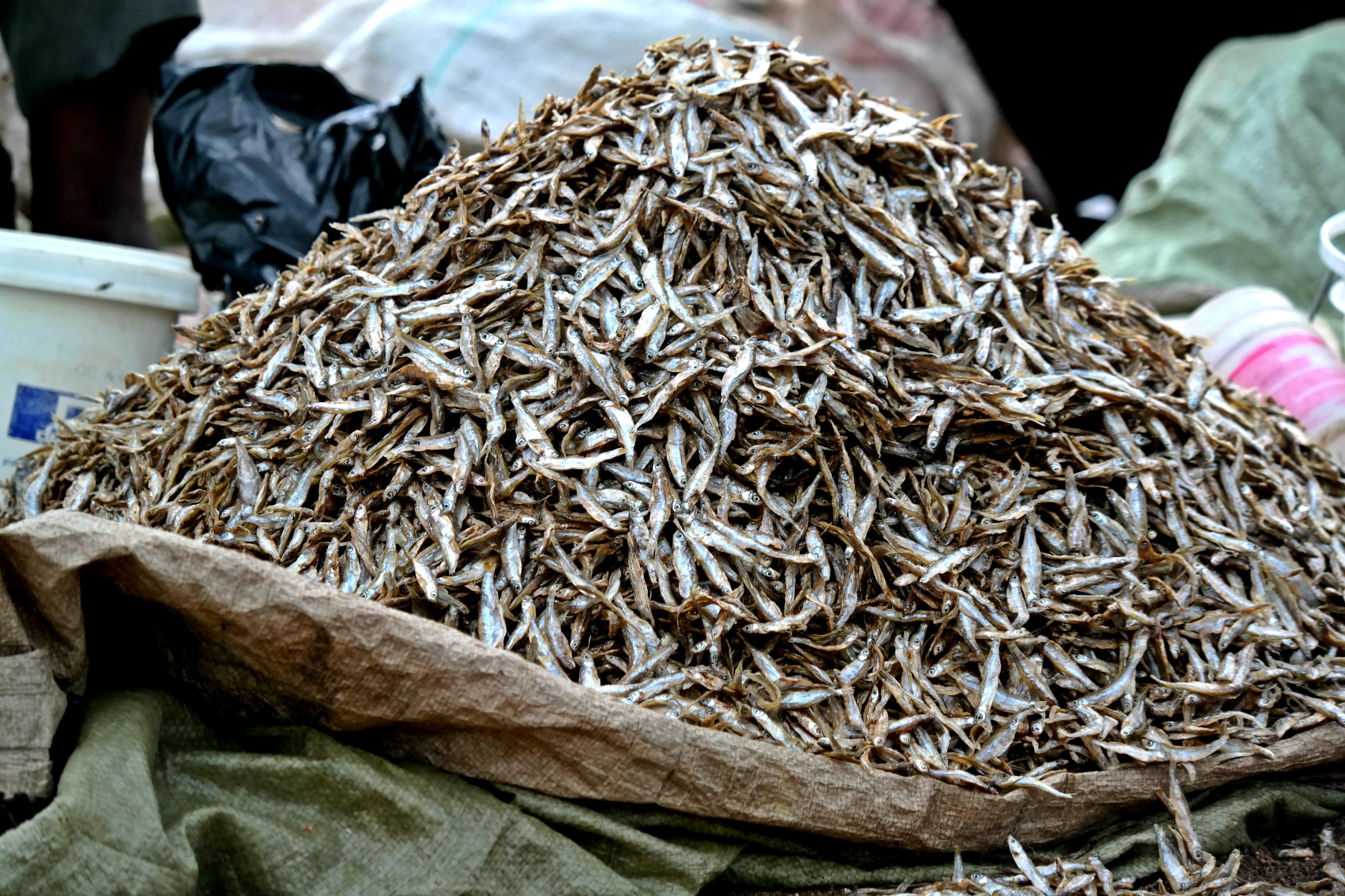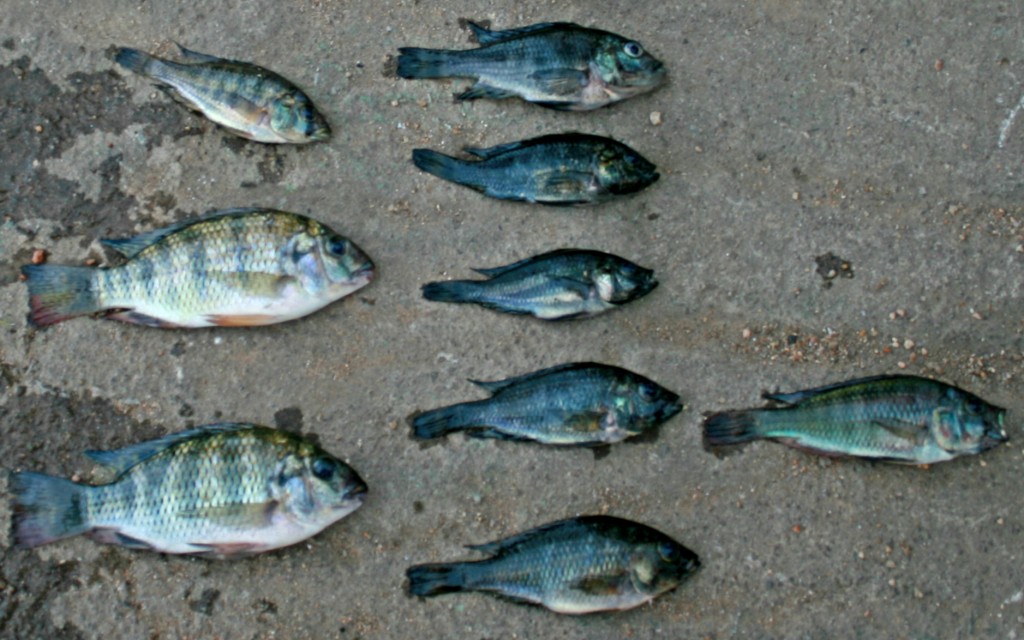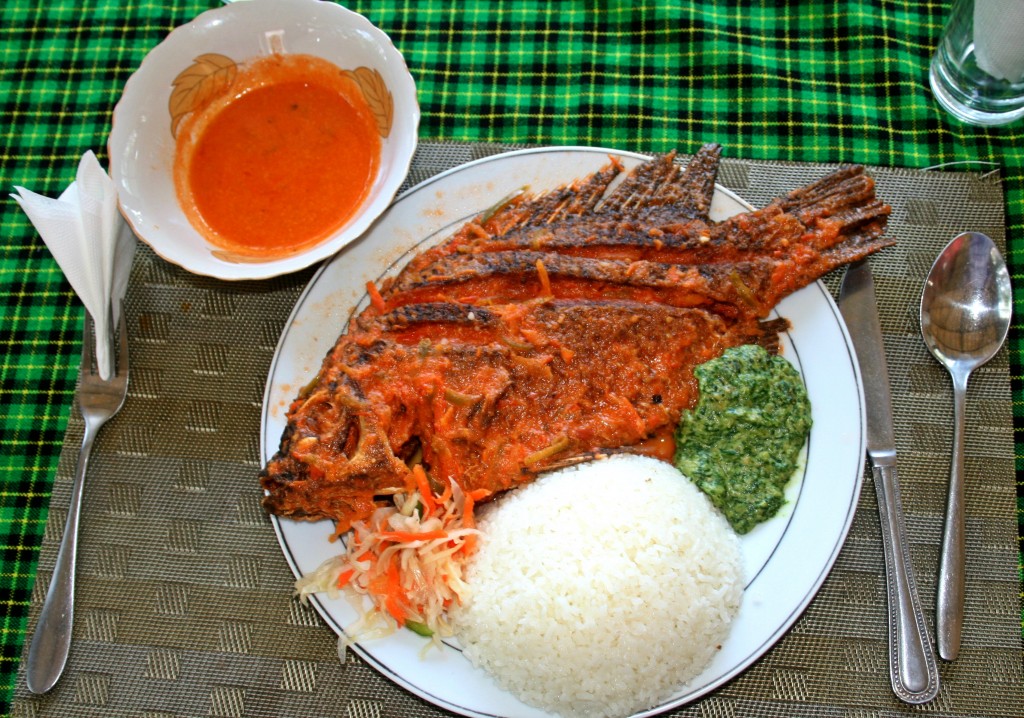The SELVA team encountered men, women, and kids fishing every day in the Lower Mara River Basin and on Lake Victoria. Fishing is done with traps, nets, line and hook, and with a local plant-based poison. People fish from boats, from the shore, in the shallow parts of the Mara River, and in the wetlands. Most people we encountered were fishing for home consumption, or subsistence, and sold any excess at the local market. We spoke with men who are part of organized groups of fishermen who camp together in different places along the river and within the lake, fishing for commercial purposes. Fishing constitutes an important part of the local economy and the local diet.
The port in Mussoma is busy with people buying and selling fish fresh from Lake Victoria and officials measuring and weighing fish catchs. Men can be seen hauling fish from Lake Victoria, women can be seen selling fish in the makeshift marketplace or out in the open. Locals come to buy fish for home and trucks come to haul commercial amounts fish to other parts of Tanzania and over the border in Kenya. A popular local fish is the tiny dagaa, a silver cyrinid, which is sold commercially and can be found in piles in the marketplace and along the roadside. Another popular local fish is talapia (or Sato in Swahilit), a type name given to a type of local cichlid, and a familiar affordable fish currently farmed all over the world. The most popular commercial fish is the Nile Perch, locally referred to as Sangara.
There have been some major changes to the fisheries in Lake Victoria and the Mara River since the 1950s introduction of the Nile Perch, a voracious predator that has decimated local cichlid species. The SELVA team is familiar with the Nile Perch as an example of the adverse impact introduced species has on the Lake Victoria ecosystem, but we found that the fish migrates upstream as reported by locals in the Mara River communities. Most of the local fishers we met reported a decrease in fish catch, decrease in available types of fish, and decrease in overall fish size. While the Nile Perch is commercially valuable, the cost of its introduction is felt in the local fisheries. Benefit of the introduced species has gone to international companies that can afford to send boats out far from shore to haul very large fish from deeper waters. Most local boats do not venture further than 1 or 2 km from shore, while few local sailboats will travel many kilometers further out in Lake Victoria to fish. The movie Darwin’s Nightmare tells local stories from locals living on and around Lake Victoria related to the commercial trade in Nile Perch with Europe. Impacts include things such as deforestation, overfishing, loss of species, pollution, and disease.
Locals reported changes beyond what the Nile Perch introduced, changes to the catch of Nile Perch itself and the water. The local officials who monitor catches reported that there are fewer Nile Perch caught and of the ones caught, the size is smaller. Some of this, they told the SELVA team, has to do with overfishing, fishing juveniles, and changes to the water itself. The water in Lake Victoria carries floating islands of water hyacinth and there is a government campaign to eradicate the plant species through removal. There are daily periods of algal blooms in the morning and afternoon turning the water green. When there are more algal blooms in the lake, there are less fish, the locals report. The locals in Lake Victoria also report an increased water level in the last 20 years. Locals in the Mara River shared their observations of change in the Mara Wetlands as an increase in papyrus plants and extent of the wetlands, and increase of the water level taking over farmland. These changes are related to the fish spawning grounds, fishing access, and catch availability. The SELVA team documented many stories from local fishers about the types of fish they are catching, the changes, and the importance of fish to their diets and livelihoods.











Recent Comments